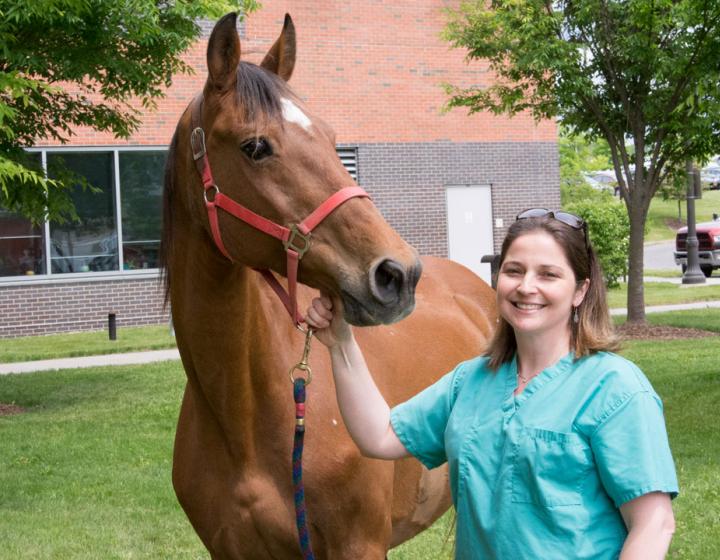Research collaborations may widen gender achievement gap
Morello Headshot.JPG
Samantha L. Morello ’02, D.V.M. ’06, courtesy associate professor in the Department of Clinical Sciences and team member of Cornell’s Center for Veterinary Business and Entrepreneurship. Photo: Carol Jennings/CVM
Gender patterns in how collaborative relationships form among veterinarians may influence how much research they publish and provide clues about why a career advancement gap exists between men and women, according to new research published by Cornell veterinarians in the Journal of the American Veterinary Medical Association.
The researchers surveyed 710 faculty members from 23 veterinary medical colleges in the United States about their education, research, and collaborative relationships. This is the largest cross-sectional survey of veterinary academics in the U.S. to date conducted by independent researchers.
They found men were more likely to engage in research collaborations with other men and had 47% higher odds of more advanced academic rank compared with women when controlling for relevant factors. Women collaborating with other women occurred the least, according to the survey.
“Overall, the senior male faculty members had the most collaborative opportunities, and the senior women the fewest opportunities,” explained Samantha L. Morello ’02, D.V.M. ’06, courtesy associate professor in the Department of Clinical Sciences, team member of Cornell’s Center for Veterinary Business and Entrepreneurship and assistant director of education and research at the American Veterinary Medical Association. “The take-home message is that gender and social networks influence research productivity, and that may describe some amount of what we see as an advancement gap.”
Dr. Susan Lawson Fubini, senior associate dean for academic affairs at the College of Veterinary Medicine, and Dr. Laura Nelson, associate dean at the North Carolina State University College of Veterinary Medicine, co-authored the paper.
A need for better connection-building
Morello believes the findings will translate to other fields in academia and other industries, as well as explaining achievement gaps among ethnic, racial, sexual, and political identity groups.
She hopes that better understanding the gender differences in research collaborations will lead veterinary colleges to create formal networking and mentorship programs that support collaboration across genders.
“The question to ask next is how to better support people who get lost or don’t benefit from the current system?” she said. “There is an opportunity to set up and implement programs that help to build connections and promote resource sharing.”
This paper takes a different approach compared to previous studies on research collaboration because it pulls from self-reported personal experiences, instead of simply looking at the authors’ genders listed on publications.
“These collaborations are often derived from hanging out with a colleague after work, a hallway conversation, or personal networking – not necessarily a formal process,” she explained. “I wanted to understand how personal networks were perhaps driving research productivity.”
Demographic differences in collaboration
Among the findings, Morello was most surprised to discover significant levels of collaboration between senior male and junior female veterinarians. “The younger women entering veterinary medicine now are getting a lot of opportunities,” she said. “But we found that women in senior ranks display less collaborative behavior than any other group. A potential area for future research is to try to understand what happens to those early-career women once they reach the later stages of their career.”
Morello has a few ideas about potential contributing factors. “From other sources, we understand that women end up taking on a lot of administrative burden, which could detract from the time they can spend on research, and they often have fewer structural resources to distribute to junior researchers,” she said.
Personal choices and motivation could also come into play, Morello said. “We know that women are more likely to spend time taking care of kids or elderly parents,” she said. “There is also the aspect of intrinsic motivation, and what drives people to pursue research versus doing other things, or relevant to its costs and rewards. We need a greater understanding of these topics, particularly in academia.”
Written by Sheri Hall





